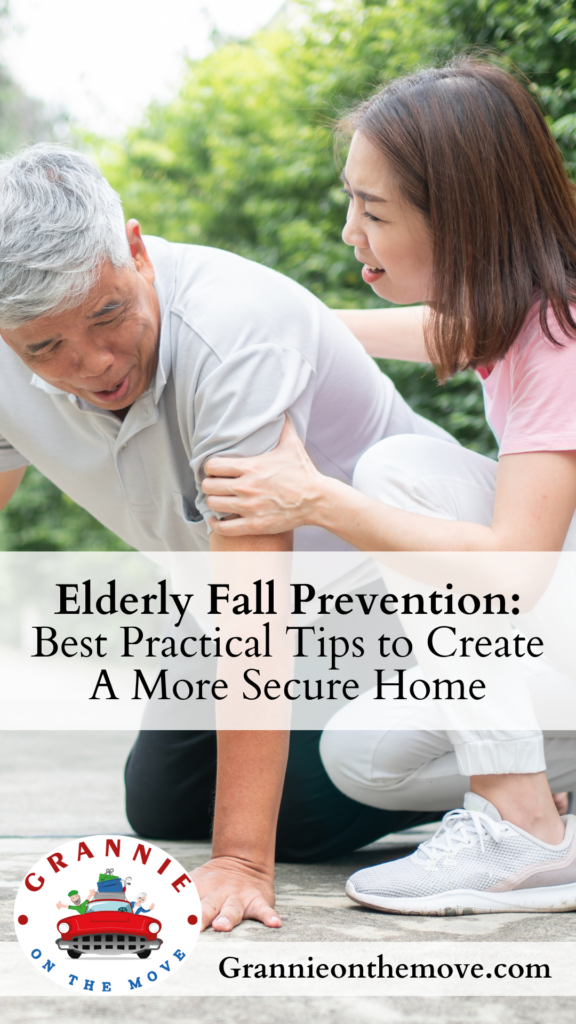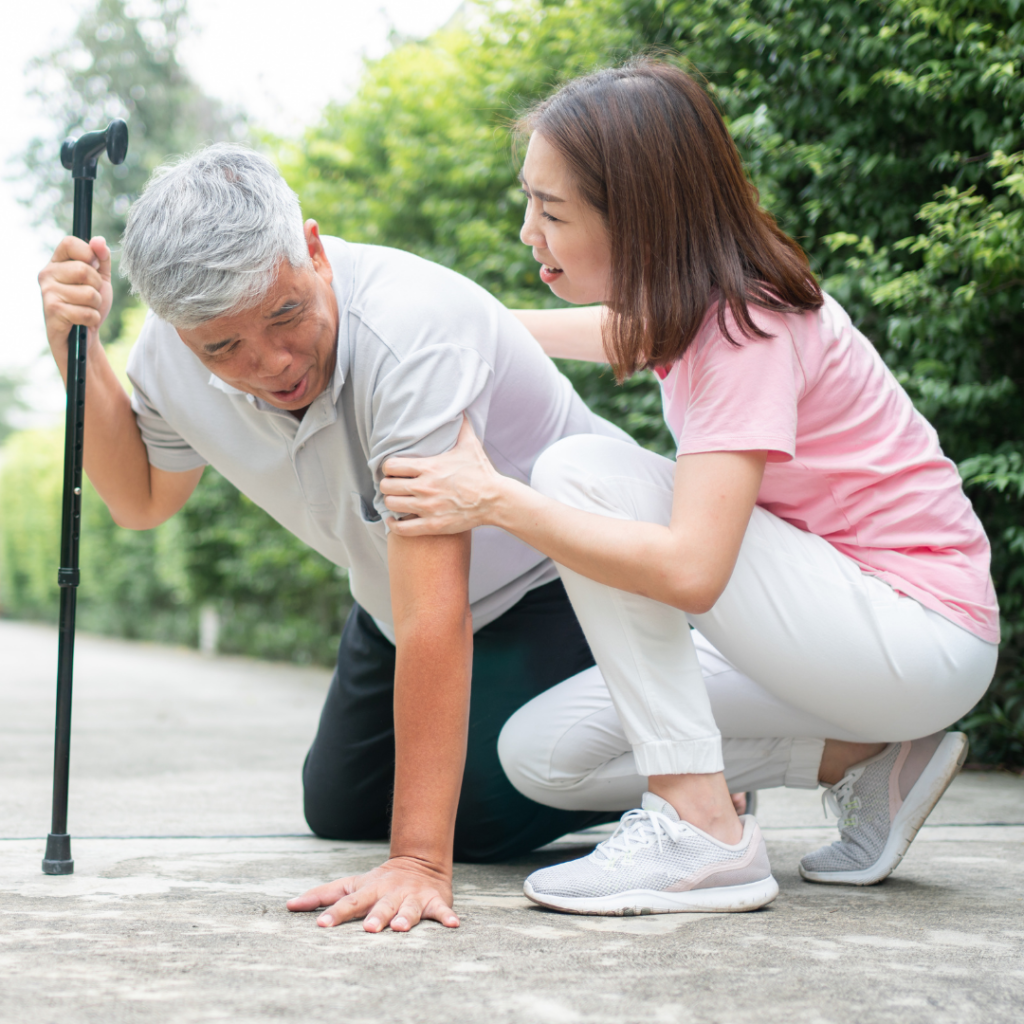Safety becomes a primary concern as time passes, especially for our elderly loved ones. One of the most prevalent issues they face is the risk of falls at home, making the topic of elderly fall prevention of utmost importance.
Falls can lead to severe injuries and significantly affect their quality of life. Therefore, creating a secure and safe home environment is essential in preventing these unfortunate incidents.
In this blog post, we will explore practical tips to make your home more fall-proof for older adults.
Common Causes of Falls in Older Adults
As we age, our bodies may become weaker and more prone to injuries, which can be a difficult and frustrating experience. It’s important to remember that falling is a common concern for older adults, and it’s understandable to feel worried about it.
Here are some other common causes of falls in seniors that we can work together to address and prevent:
- Weakness and loss of balance due to aging
- Chronic health conditions such as osteoporosis, arthritis, or dementia
- Side effects of medications
- Vision and hearing impairments
- Safety hazards in the home environment, such as loose rugs or poor lighting
For seniors living independently at home or with family caregivers, the fear of falling can limit their mobility and independence.
Fortunately, family members and loved ones can take many practical measures to reduce the risk of senior falls at home.
Elderly Fall Prevention Strategies for a More Secure Home
Before delving into the specific strategies for fall prevention, it’s crucial to understand that each individual’s needs can be different. The fall prevention strategies you implement should be personalized and cater to the unique needs of the older people in your care.
Simple alterations can go a long way toward ensuring a safer environment. So, let’s discuss several fall prevention strategies that can help transform your home into a safer sanctuary for your loved ones.
Risk Assessments and Home Modifications
The first step toward preventing falls in older adults is assessing potential home environment hazards.
It can be helpful to involve a healthcare professional in a comprehensive risk assessment, as well as home safety assessments. These service providers can identify potential risk factors such as uneven flooring, cluttered pathways, or inadequate lighting that may increase the chance of falls.
It’s also wise to mention any medications, existing health conditions, and previous falls to the healthcare professional. These factors can contribute to an older person’s risk of falling and require specialized attention and modifications.
Modifying the home
Home modifications play a significant role in preventing falls among elders. These changes aim to create a more secure environment by eliminating potential hazards, incorporating assistive devices, and making navigation around the house easier.
Here are some effective home modifications you can consider:
Bathroom Modifications: Bathrooms can be pretty risky due to the potential for wet, slippery surfaces. Caregivers can install grab bars in the shower, near the toilet, and the bathtub to provide support. You may also consider using a shower chair and a hand-held showerhead for additional safety. Our list of top bathroom safety aids has many recommendations for modifying this space.
Stair Safety: If the house has stairs, ensure there are sturdy railings on both sides. The steps should be free of clutter and well-lit to prevent tripping. You may want to consider installing stair lifts for seniors with difficulty climbing stairs.
Lighting: Good lighting is essential, especially in hallways, stairs, and bathrooms, where shadows can create illusions that lead to fall-related injuries. Caregivers may find themselves adding nightlights in bedrooms and bathrooms for better visibility during the night.
Flooring: It’s important to remove any loose rugs or carpets that could cause tripping. Additionally, all walkways should be clear and wide enough for easy navigation. Non-slip tiles are a good option for the floors in the kitchen and bathroom.
Furniture Arrangement: Arrange furniture so that it’s easy to navigate around, especially if the person uses a walker or wheelchair. Consider using furniture risers for chairs and beds to make getting up easier.
Remember, home modifications for elderly fall prevention should meet the specific needs of the person in your care. A secure home with the proper assistive devices can significantly reduce the risk of falls and help seniors live more comfortably and independently.
Promoting Physical Activity for Seniors
Engaging in regular physical activity is a highly effective way to prevent falls and promote the overall health of older adults.
Regular exercise can improve strength, balance, and coordination, which is crucial in preventing falls. One such activity, especially beneficial for seniors, is Tai Chi.
This ancient Chinese martial art focuses on controlled movements and deep breathing, making it an excellent low-impact exercise for older adults. Tai Chi not only strengthens the lower body but also promotes better balance, flexibility, and motor control, which are all crucial in fall prevention.
However, the idea of physical activity might seem daunting for some seniors, especially those who have experienced falls in the past. If this is the case, it is vital to discuss these concerns with their doctor. A senior health professional can help caregivers tailor a suitable and safe exercise regimen that caters to the senior’s current physical ability and health conditions.
Remember, it’s never too late to start exercising. Incorporating physical activities like Tai Chi can be a practical and enjoyable way to enhance fall prevention strategies, boost overall health, and promote a greater sense of independence among seniors.
Always involve healthcare professionals to ensure safety and effectiveness in this journey towards a more secure, fall-free lifestyle.
Proper Footwear for Seniors
Choosing the right footwear is an essential step in elderly fall prevention. Always remember that practicality and safety should precede style when choosing footwear for older people.
Seniors should consider shoes that have non-slip soles to prevent slipping on slick surfaces such as tiled or wooden floors. Shoes should also offer good support and fit properly – and not be too loose or too tight, as both can lead to instability and increase the risk of falls.
High heels, flip-flops, and shoes with smooth soles are generally not recommended. Instead, opt for low-heeled shoes with firm heel support.
Slippers may seem comfortable, but they often lack the necessary support and can increase the risk of slipping. Therefore, even when indoors, wearing supportive shoes can contribute significantly to the safety of seniors.
Fall Prevention Programs
Incepted in 2004 in Idaho, Fit and Fall Proof™ (FFP) is a novel fall prevention program specially designed for older adults. The program concentrates on enhancing strength, balance, and mobility through fall prevention activities, addressing key aspects that significantly impact an elder’s susceptibility to falls.
What sets FFP apart is its community-based approach—volunteer leaders from local communities are trained to facilitate classes in various accessible locations, including senior centers, community services, churches, libraries, and hospitals. By fostering an environment of community support and participation, this program truly embodies a proactive and collective effort toward elderly fall prevention in Idaho.
Family caregivers and seniors can learn more about this amazing fall prevention program on the Idaho Department of Health & Welfare’s website, as well as the resource linked above.
Conclusion
Elderly fall prevention is a vitally important aspect of caregiving and senior health. It requires not just home modifications and physical activities but a holistic approach that includes community support, awareness, and health programs.
Injury prevention for seniors begins at home with the steps outlined above, but it should extend to every aspect of their lives. By building a safe and supportive environment, we pave the way for our loved ones to age with dignity, comfort, and independence.
Remember that ongoing vigilance is key to maintaining a secure environment. Each measure we take is a step towards creating a fall-free zone, enhancing the quality of life, and, most importantly, safeguarding our elderly from unnecessary fall injuries.
The safety of your loved ones is of utmost importance to you. Let’s take the necessary steps together to secure their environment and bring you peace of mind. At Grannie On The Move, we have a team of senior care advisors at your disposal. We will help you create a safe, comfortable, and fall-free zone for your elderly relatives and loved ones.
Contact us today, and let’s work together to promote a safer, happier, and more independent lifestyle for our seniors.


